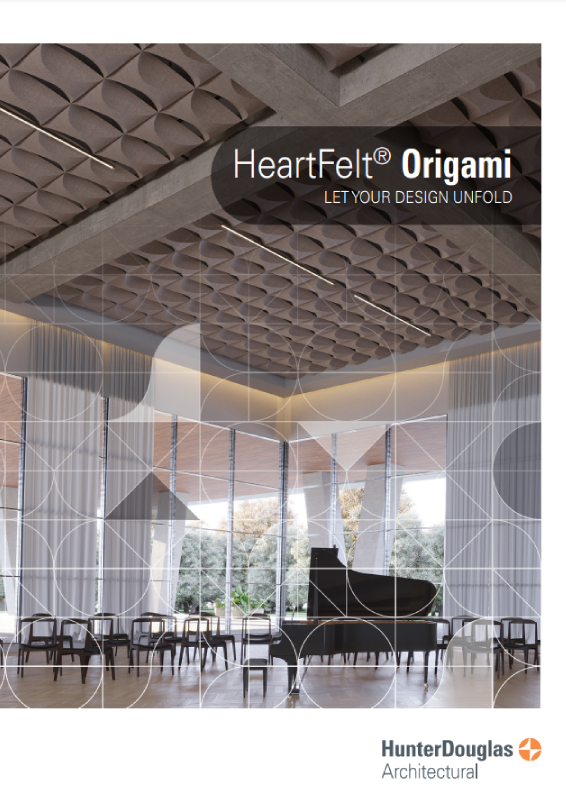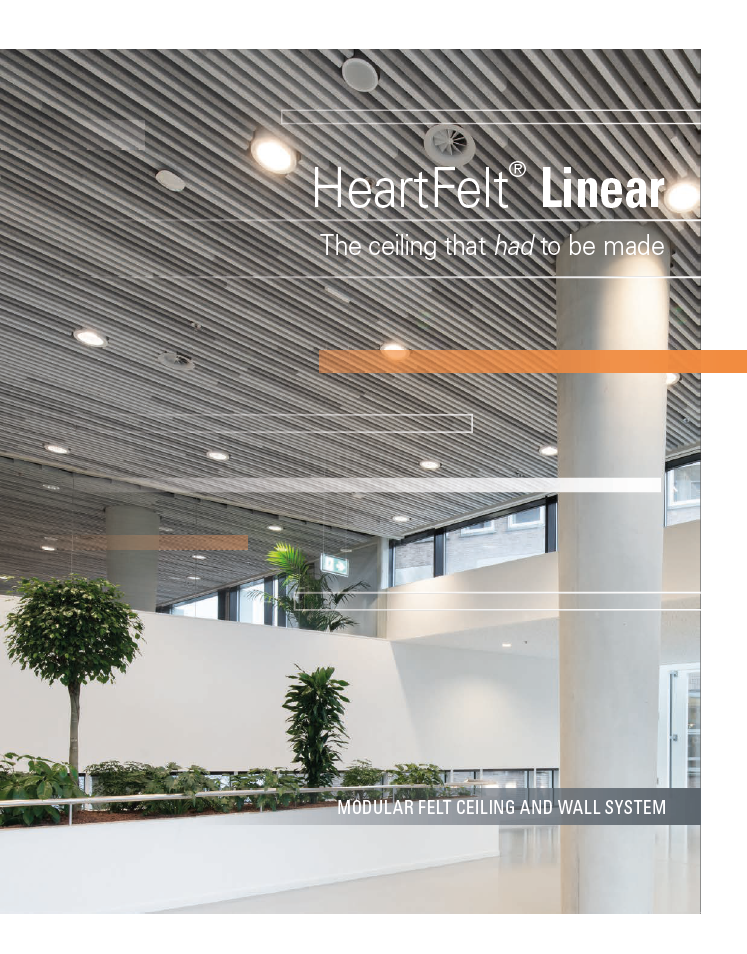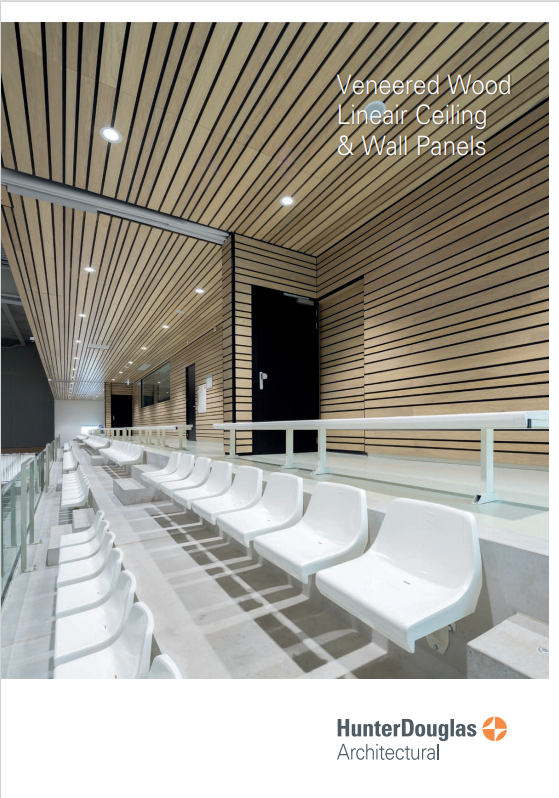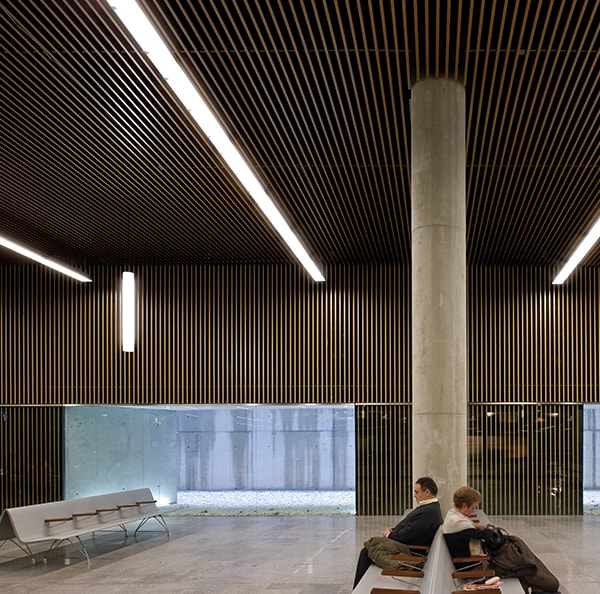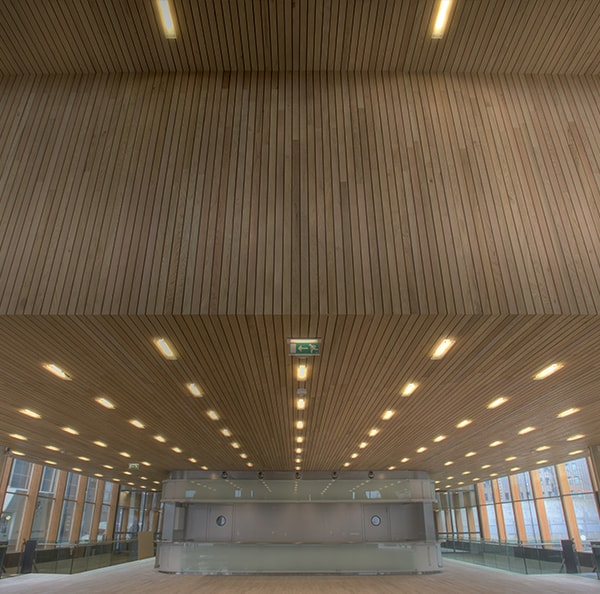
Like light, colour and temperature, sound influences the performance and wellbeing of us all.
The importance of good acoustics, however, is often underestimated. Measurability does play a part here: it is difficult to establish a direct, data-based relation between acoustics and labour productivity.
Also, it is often thought that problems with excess noise can be solved post hoc with furniture or floor covering.
For budgetary reasons, acoustics are not a top priority for many contractors. The result is that complaints about acoustics do not surface until a building is in use. A better approach is to take acoustic solutions into account at an early stage.
Hunter Douglas has placed this topic on the agenda with a new whitepaper. The document presents ceilings as an ideal means of realising optimal acoustics. Also, the type of ceiling has to be in line with the purpose of the interior space. The whitepaper zooms in on four key areas. In healthcare, for instance, good acoustics contribute to better recovery of patients, while in schools they improve students’ learning performance. In office spaces, good acoustics improve labour productivity. In public spaces, such as restaurants, noise absorption is vital.
Acoustics play a vital role in healthcare, a study by Sweden’s Huddinge University Hospital has shown. The study looked at the influence of interior acoustics on the recovery of cardiac patients. During the research period, the sound-reflecting ceiling tiles in the hospital’s cardiology department were replaced with sound-absorbing tiles. After three months, there were significant differences between good and poor acoustics with regard to the pulse rate amplitude of patients who had suffered cardiac arrest or heart spasms. Among the patients exposed to poor acoustics, rehospitalisation occurred more frequently. The results of this study highlight the importance of good acoustics in healthcare. The use of sound-absorbing ceilings provides patients with the quiet and rest they need.
In education, acoustics are also important. Acoustic experts have found that students exposed to poor acoustics miss much of what their teachers are saying. Straining to understand the teacher can lead to concentration problems and fatigue. Often, these problems are caused by too much reverberation. Solving acoustic problems in schools calls for careful consideration of the type of education being offered. Today’s emphasis on interaction and group work, obviously, affects sound levels: more students tend to be speaking at the same time, raising disturbance noise levels. This negative effect is minimal in rooms with optimal acoustics, a study entitled Acoustic Ergonomics in Schools (2005) has shown. Ceilings play a vital role here. Opting for a ceiling solution that reduces reverberation enables students to concentrate better and boosts learning results. Teachers also find their health benefits from good acoustics, as they do not have to strain their voices and can thus avoid unduly raising their heart rate.
In office spaces, good acoustics also influence performance. The rise of Alternative Working Practices and more open-plan offices poses new acoustic challenges. Employees sit together in larger numbers, causing more noise. Noise in the office usually results in decreased productivity, concentration problems, stress and increased absenteeism. Using an acoustic ceiling with a high absorption class is a good way of preventing noise from being transported across larger distances. It has been shown that in practice the cost of acoustic design is less than one half per cent of total building costs, if the acoustic design is included in the earliest stages of the building process. In the operational phase, the gains of this investment will easily outweigh the cost in terms of increased labour productivity and decreased absenteeism.
In public spaces, such as restaurants, speech intelligibility is a major problem. The Netherlands’ TU Delft University of Technology observes that poor speech intelligibility leads to more one-on-one conversations, at the expense of conversations between four people. As a result, noise levels rise. A sound-absorbing ceiling cuts back reverberation time, contributing to a pleasant environment.
The whitepaper emphasises that a good, carefully designed acoustic ceiling – often a low priority for contractors and commissioning parties for budgetary reasons – is a worthwhile investment that will soon pay itself back. It also states that neglecting the effects of poor acoustics – or thinking the problem can be solved with floor covering, curtains, furniture and plants – can lead to major problems. The cost of solving such problems post hoc is often far higher than the cost of including acoustic requirements and wishes in the design phase.











